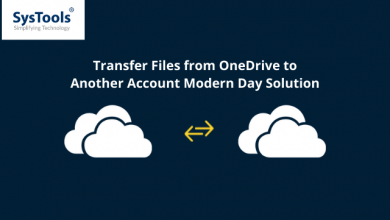Legal Digital Transformation: Revolutionising the Legal Industry for Enhanced Efficiency and AccessFoundations of Legal Digital Transformation

Legal digital transformation reshapes how law firms operate and deliver services. It includes the adoption of technology that streamlines processes, enhances client interaction, and improves overall efficiency. You will explore its definition, history, and current technology solutions.
Definition and Scope
Legal digital transformation refers to integrating digital technology into all areas of the legal industry. This change affects how legal services are delivered, from client consultations to case management.
Key aspects include:
- Efficiency: Automating routine tasks frees up time for lawyers.
- Client Experience: Enhanced communication channels improve engagement.
- Data Management: Digital tools help manage vast amounts of legal data.
This transformation aims to create a more agile, responsive, and client-focused legal environment.
Historical Context and Evolution
The legal industry has undergone several changes over time. Initially, legal work relied heavily on paper-based processes.
With the emergence of personal computers in the 1980s, law firms began adopting basic software for billing and document management.
The internet’s rise in the 1990s introduced online research databases. By the 2000s, cloud computing allowed for more significant changes, enabling remote access to legal resources.
This evolution has paved the way for recent advances in artificial intelligence (AI) and machine learning, enhancing research and predictive analytics in legal practices.
Legal Technology Solutions Landscape
Today, a variety of legal technology solutions are available for firms. These tools support everything from practice management to legal research. Some key solutions include:
- Case Management Systems: Organize and track cases easily.
- Document Automation Software: Streamline document creation and reduce errors.
- E-Discovery Tools: Simplify the process of gathering electronic evidence.
Furthermore, client portals allow clients to access information and communicate securely.
These technologies not only improve workflow but also enhance collaboration between legal professionals and clients.
Impact of Digitalization on Law Firms
Digitalization significantly alters how law firms operate. It enhances efficiency, improves client interactions, and strengthens risk management. These changes are essential for staying competitive in today’s legal market.
Operational Efficiency
Digital tools can streamline many daily tasks in law firms. For example, case management software organizes documents and tracks case progress. This saves time and reduces errors.
Using automation for routine tasks like billing or document preparation can free up lawyers’ time. They can focus more on complex cases and client advice.
Cloud computing allows for easy access to files anytime and anywhere. This flexibility supports collaboration among team members, making the workflow smoother.
Client Service and Engagement
With digital tools, client communication becomes instant and effective. You can use client portals to share documents and case updates. This creates transparency and keeps clients informed.
Virtual meetings replace long drives to the office. This saves time for both clients and lawyers. You can also reach a wider audience, offering services to clients from different locations.
Personalization is improved through data analytics. You can tailor your services based on client preferences. This enhances client satisfaction and builds stronger relationships.
Risk Management and Compliance
Digital transformation enhances risk management in law firms. Compliance software helps ensure you meet legal standards and deadlines. This minimizes the risk of penalties and enhances your firm’s reputation.
Moreover, data security is critical. Digitalization includes cybersecurity measures, protecting client data from breaches. Regular security audits can help identify vulnerabilities early.
Staying updated with technology also aids in monitoring compliance. You can quickly adapt to changes in regulations, ensuring your firm operates within legal boundaries.
Implementing Digital Strategies in Legal Practices
Adopting digital strategies can greatly enhance your legal practice. This involves careful planning, choosing the right tools, and addressing potential challenges.
Strategic Planning and Goal Setting
Before diving into digital transformation, set clear goals for your practice. Identify what you want to achieve with technology. This may include improving efficiency, enhancing client communication, or streamlining document management.
Create a strategic plan that outlines your steps. Identify key performance indicators (KPIs) to measure progress. Make sure to involve your team to gain their insights and commitment.
Regular reviews of your goals and results will help you stay on track. Adjust your strategies based on what works and what doesn’t. This will lead to continuous improvement in your digital approach.
Choosing the Right Legal Software
Selecting the right legal software is crucial. Start by understanding the specific needs of your practice. Do you need case management, billing, or document automation tools?
Research various software options available in the market. Look for features such as user-friendliness and customer support. Compare pricing models to ensure they fit your budget.
Consider software that integrates well with your existing systems. A good choice can improve collaboration and data management. Don’t skip reading reviews and asking for demos to ensure you’re making an informed decision. For example,Oozou provides insightful resources on how digital transformation is reshaping industries like law, helping firms stay ahead.
Overcoming Implementation Challenges
Implementing new digital strategies can be difficult. Resistance to change is common in the legal field. To ease this, clearly communicate the benefits of the new tools to your team.
Provide training sessions to help everyone get comfortable with the new systems. Address any concerns by encouraging open discussions about the changes.
You may also encounter technical issues during implementation. Have a support plan in place to solve these problems quickly. This preparedness can reduce downtime and keep your practice running smoothly.




